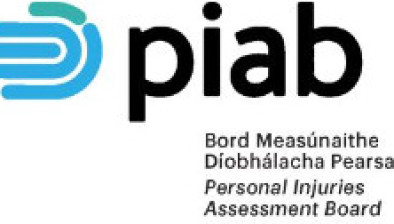High Court: Challenge to controversial Personal Injuries Guidelines dismissed

The High Court has dismissed a challenge to the application of the recently-adopted Personal Injuries Guidelines to a woman’s claim for compensation. The woman claimed that her injury would have previously attracted damages between €18,000 and €34,000, but was only assessed at €3,000 by the Personal Injuries Assessment Board (PIAB) under the new Guidelines.

About this case:
- Citation:[2022] IEHC 321
- Judgment:
- Court:High Court
- Judge:Mr Justice Charles Meenan
Delivering judgment in the case, Mr Justice Charles Meenan determined that the Guidelines passed by the Judicial Council in March 2021 were lawfully adopted and that the applicant had no right to have her application determined under the old Book of Quantum guidelines.
Background
In April 2019, the applicant tripped and fell on an uneven footpath, suffering an undisplaced fracture to her right lateral malleolus (ankle). After consulting with a solicitor, the applicant decided to make a claim for compensation against the local authority. An application was made to PIAB for assessment of her injury, as required by law, in June 2019.
The applicant was advised that, based on the Book of Quantum which was effective at the time, she would receive between €18,000 and €34,000. However, in March 2021, the Judicial Council passed the new Personal Injury Guidelines pursuant to the provisions of the Judicial Council Act 2019. All judges at the time voted on the Guidelines which passed by an 83-63 margin. The Guidelines generally provided for significant reductions in compensation for minor and moderate injuries in personal injury cases. In May 2021, the applicant’s case was assessed by PIAB at €3,000.
The applicant challenged the decision in judicial review proceedings. The proceedings included constitutional challenges to the validity of the Guidelines adopted by the Judicial Council. It was submitted, inter alia, that the 2019 Act was an impermissible delegation of legislative power to the Council because it failed to set out proper principles and policies for drawing up the Guidelines. It was also said that the legislation interfered with judicial independence and that the Guidelines were impermissibly retrospective in nature.
The applicant also submitted that the Council and the Personal Injuries Guidelines Committee (which was made up of selected judges) wrongly proceeded on the basis that the purpose of the Guidelines was to reduce the level of damages.
Finally, the applicant argued that PIAB ought to have assessed her case on the basis of the Book of Quantum since her application for assessment was made in June 2019.
High Court
Mr Justice Meenan began his judgment by considering the principles which applied to the concept of general damages. The court noted that the “common good and social conditions in the State” were important factors in assessing the fairness of awards (see Nolan v. Wirenski [2016] 1 I.R. 461). The concept of proportionality was particularly relevant to the framing of the Guidelines, as was the “cap” on general damages for catastrophic injuries which had been set in Sinnott v. Quinsworth Ltd [1984] I.L.R.M. 523 and varied over the intervening years.
The court held that the cap (now €550,000) provided context between very minor and worst-case injuries, which was supposed to result in consistency and predictability of awards.
The court went on to outline the legislative provisions of the 2019 Act which related to the Judicial Council, Committee and the adoption of the Guidelines. The court held that section 90 of the 2019 Act was central to the case, as provided that the Guidelines could include guidance on “any or all” of certain specified matters. These specified matters included, inter alia, the level of damages for injuries generally or particular categories of injuries and the range of damages to be considered for particular injuries.
Section 90(3) provided that the Committee must have regard to inter alia the level of damages awarded in the State and other jurisdictions, principles for assessment as previously determined by the Superior Courts and the need to promote consistency in the level of compensation for injuries.
On the issue of whether proper principles and policies were set out in the 2019 Act, Mr Justice Meenan considered the provisions of section 90 in the context of cases such as NECI v. Labour Court [2021] IESC 36 and Bederev v. Ireland [2016] 3 I.R. 1. In the court’s opinion, the statutory provisions for the creation of the Guidelines set out “basic, discernible rules of conduct or guidelines which the subordinate body must observe” (NECI). Further, the breadth and detail of the Guidelines would have inappropriately burdened the capacity of the Legislature (Maher v Minister for Agriculture [2001] 2 I.R. 139). As such, proper principles and policies were contained in the 2019 Act.
Turning to judicial independence, the court held that the amended section 22 of the Civil Liability and Courts Act 2004 permitted a court to depart from the Guidelines where reasons were given by the trial judge. This did not therefore represent a significant change from the Book of Quantum, where it was merely desirable for a court to refer to those provisions (McKeown v. Crosby and Anor [2020] IECA 242).
Mr Justice Meenan next considered whether the enactment into law of the Guidelines amounted to a retrospective interference with certain property and bodily integrity rights vested in her. The court held that, while the applicant would undoubtedly receive a lower award under the Guidelines, the only relevant right which the applicant enjoyed was to have damages assessed in accordance with law. The applicant did not have a right to a particular sum contained in the Book of Quantum, the court held.
It was held that the levels of damages varied over time and there was no question of the “extinction” of rights in this case because the applicant could still lawfully pursue the defendant (see Re Article 26 of the Constitution and the Health (Amendment) (No. 2) Bill 2004 [2005] 1 I.R. 105). Further, the court held that the reductions in the Guidelines were not so “contrary to reason and fairness as to constitute an unjust attack” on her rights (see Tuohy v. Courtney [1994] 3 I.R. 1).
Judicial Council
The court then considered the applicant’s submissions relating to the Judicial Council’s decision to vote on the Guidelines. The court noted that the framers of the 2019 Act were conscious that the functions of the Council could be perceived as interfering with judicial independence. As such, section 93 expressly stated that nothing in the Act should be construed as interfering with judicial functions.
It was held that judges were the people who assessed and awarded damages for personal injuries in Ireland and “their independence, allied to their professional knowledge and experience” made judges particularly suitable to draw up the Guidelines, the court said.
The court also rejected the submission that the Council wrongly thought that the purpose of the Guidelines was to reduce the overall level of damages. The court referred to the provisions of section 90 which “clearly set out the matters which the Committee must have regard in preparing the Guidelines.” There was no express or implied statement that damages should be reduced. In this regard, the court considered the Committee’s report to the Council Board. It did not follow that the reduction in damages stemmed from a belief that the Committee or Council was required to do so.
The court also rejected submissions that there was no legal basis for considering the awards in other jurisdictions and that Circuit and District judges were not eligible to vote on matters which were outside their courts’ monetary jurisdictions.
PIAB
On this basis, the court moved to consider PIAB’s application of the Guidelines to the applicant’s case. The court outlined the full chronology of the application from April 2019 to assessment in May 2021 and determined that the main cause of the delay was a result of the applicant’s X-rays not being forwarded to the Board.
Considering the statutory provisions of the PIAB Act 2003, it was held that an application was distinct from an assessment and that an assessment could only be arrived at following the provision of relevant information to the assessor.
Since PIAB’s procedure was governed by statute, the court was satisfied that the Board was correct to assess the case under the Guidelines. Regarding the applicant’s complaints as to lack of fair procedures, it was held that the applicant had the opportunity to make a full case to the Board. In particular, it was noted that the applicant could have submitted “any document” which was considered relevant to the claim.
Conclusion
Accordingly, the court determined that the Guidelines were valid as a matter of law. Further, it was held that PIAB correctly applied the Guidelines to the applicant’s case. The application for relief was refused.
Delaney v. The Personal Injuries Assessment Board and Ors. [2022] IEHC 321










